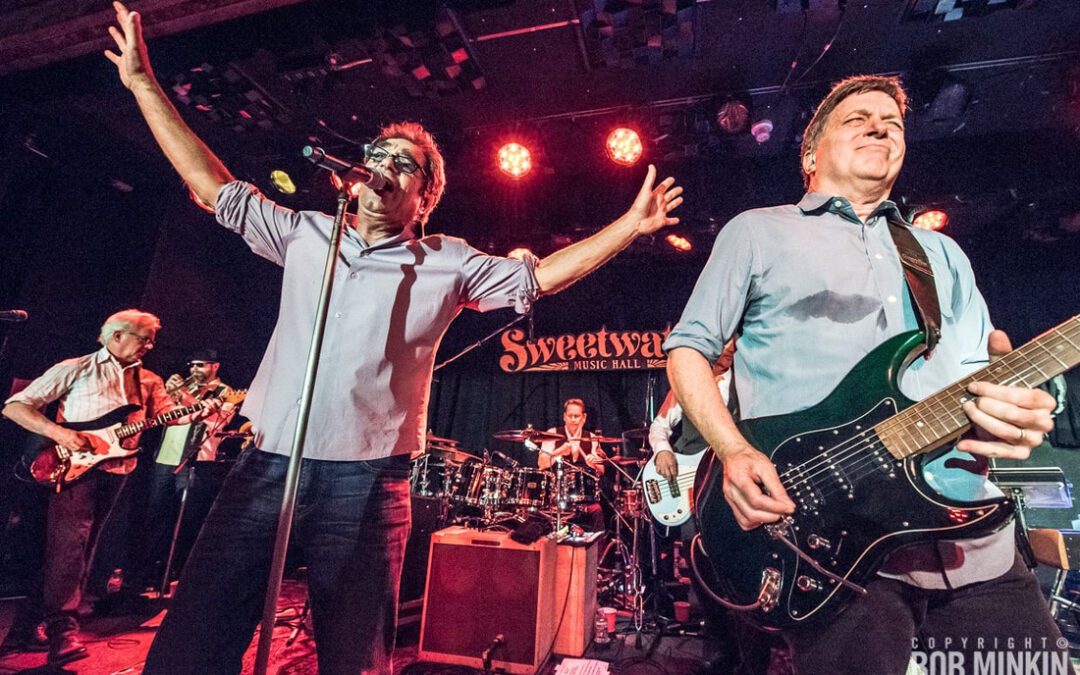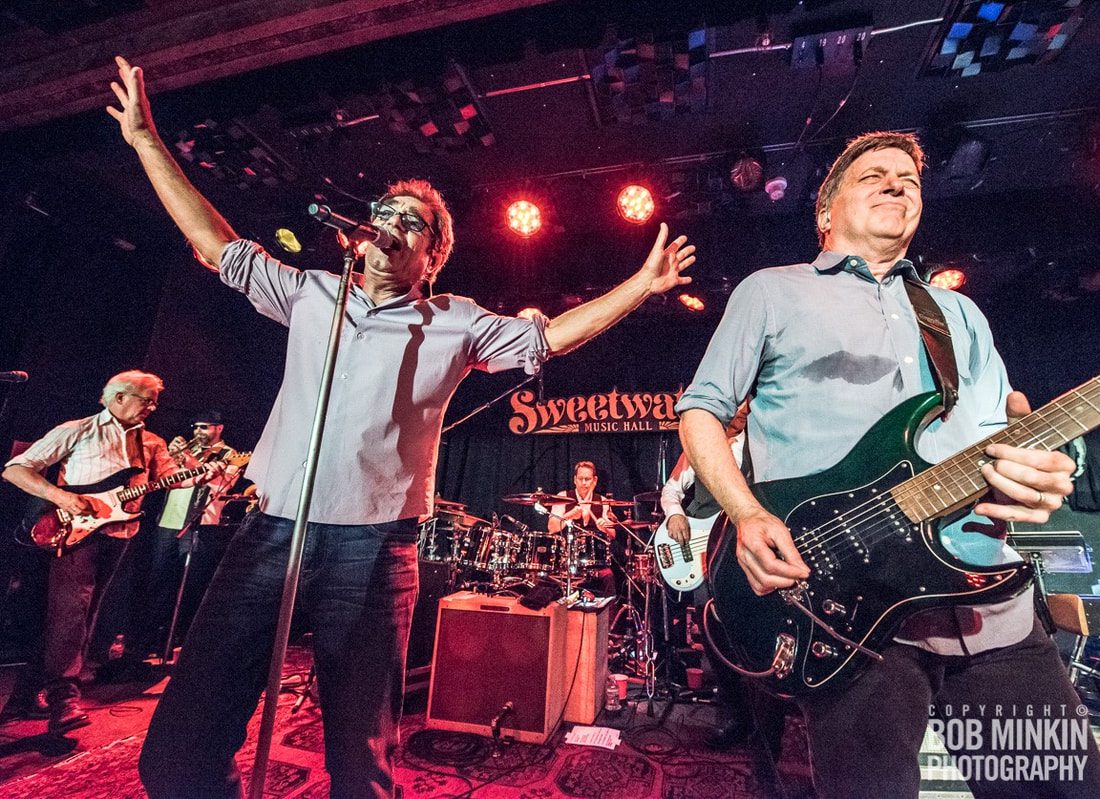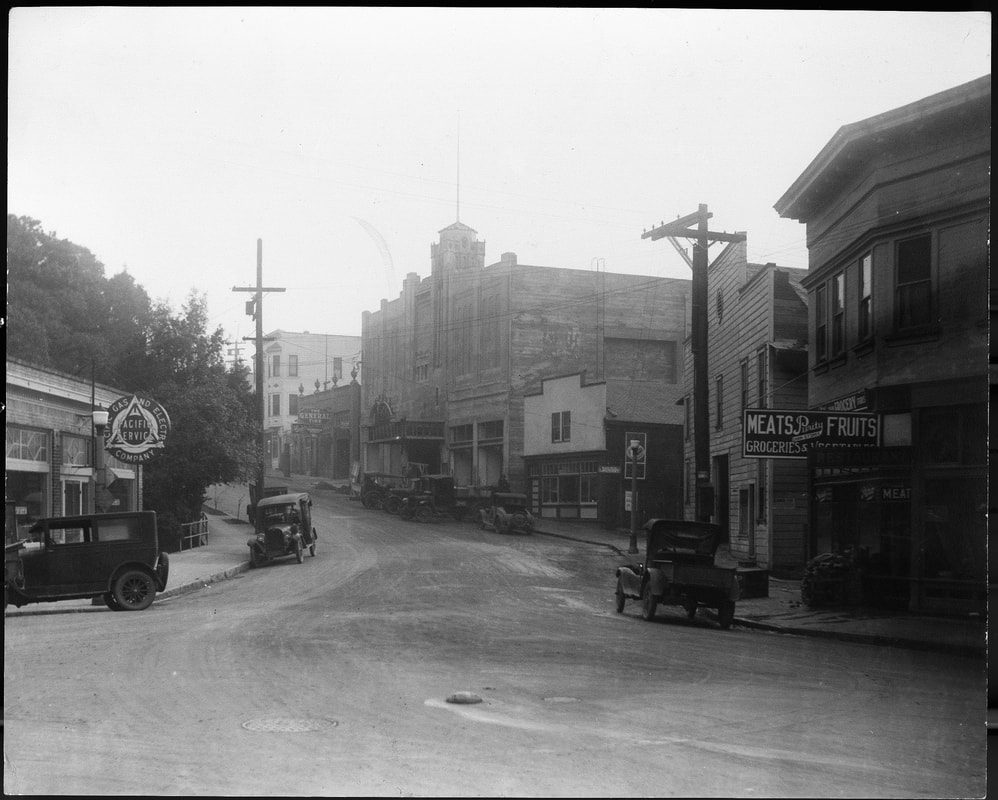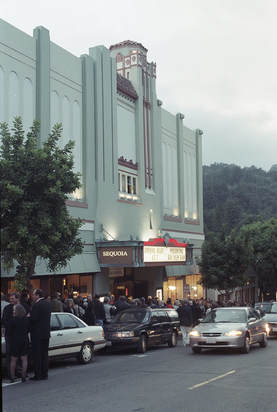 Opening Night of the 2001 Mill Valley Film Festival at the Sequoia Theater. Photo courtesy California Film Institute.
Opening Night of the 2001 Mill Valley Film Festival at the Sequoia Theater. Photo courtesy California Film Institute.
But just around the corner, an equally momentous event was happening, one that was not technically part of the festival itself but nonetheless provided a critical jump-start to the festival’s future in Mill Valley.
Huey Lewis & the News, the homegrown band seemingly unable to write a song in the 1980s that didn’t dominate the Billboard charts, selling tens of millions of albums including 1983’s Sports, which featured the band at the 2am Club, were playing a pair of shows at the Sweetwater Music Hall.
Tickets for the shows were $90 apiece, with proceeds going to festival producer California Film Institute’s plans to eventually renovate the Sequoia Theatre, which has long been the centerpiece of MVFF and which CFI bought for $2.5 million in 2008 after an expansive community fundraising campaign. The building also includes a pair of adjacent space that contain the Monarch gift shop and Benefit Cosmetics.
“I’ve known Huey and many of the band members for a long time, and we’ve been talking about finding the right time to do something like this,” Fishkin says. “For it all to come together on the closing night of our 40th is incredible.”
To say that the plans to renovate the theater are in their early stages is a vast understatement. Cinemark, the Plano, Texas-based movie theater giant, has a long-term lease on the Sequoia, operating it as the CineArts Sequoia on a lease that potentially runs through September 2023 if they exercise their final five-year option on it in 2018.
CFI hasn’t hired an architect for the project yet, but Fishkin said the project will likely be significant in scope, and they’ll be digging into details later this year and into 2018.
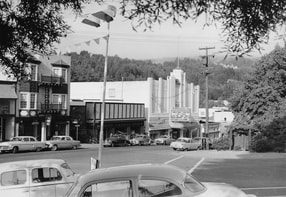 The Sequoia Theatre in 1955. Photo courtesy the California Film Institute.
The Sequoia Theatre in 1955. Photo courtesy the California Film Institute.
CFI and Fishkin have already been through this lengthy process once, when they in 1999 renovated the Smith Rafael Film Center in downtown San Rafael, turning that theater into what he calls “a town hall” in Marin, where “incredible events and conversations can occur,” as when Robin Wright asked CFI to host an impromptu screening of the documentary The Greatest Silence: Rape in the Congo and a post-film Q&A with Wright activist John Prendergast, drawing a packed house.
With competition from the likes of Netflix, Amazon and everything-on-demand, Fishkin says it’s vital that community theaters like the Rafael and the Sequoia truly engage with the community itself. “It’s critical that the theater is deeply involved in the community and delivers great value to the community in order to make it sustainable,” he says.
Fishkin is on the board of Art House Convergence, an 11-year-old organization of independent theater owners who gather each year at the Sundance Film Festival to explore new ideas and business models for independent movie houses, particularly in the age of so many innovative distribution channels for film.
Before the money is raised and the plans are finalized on the Sequoia renovation, the biggest goal in CFI’s immediate future is obtaining 100% ownership of the Sequoia. Right now, the organization is the managing partner among a number of individual investors and foundations in an effort spearheaded by the Friends of the CFI-Sequoia Theatre.
“This is a very preliminary stage,” Fishkin adds. “We’re looking at nearly six years before we would start construction. We want this theater to be as significant as the Rafael. And we want this to be something that is here for generations to come. This is just the very, very beginning.”
Sequoia’s History
The opening night featured the films “Uncle Tom” and “The Kid’s Clever,” a sports review by Grantland Rice as well as vaudeville acts, speeches and a performance on a Wurlitzer organ. Blumenthal owned and operated the theater for nearly 50 years. Blumenthal “twinned” the theater in 1875 by turning it into a two-screen house, and Pacific Theatres took it over one year later, making subsequent repairs in 1991.
 The Sequoia Theater in 1981. Photo courtesy the California Film Institute.
The Sequoia Theater in 1981. Photo courtesy the California Film Institute.
In 2006, Cinemark acquired Century Theatres, and has operated the theater as CineArts Sequoia ever since. Throughout all those years, the Blumenthal family continued to own the building, selling it to CFI and its investors in 2008.
The eventual realization of the goal to renovate the Sequoia would truly put the Mill Valley Film Festival on the best possible footing to be successful and sustainable for decades to come, Fishkin says.
“We’re fully aware of the concerns when people says, ‘Why do you ask us to drive from an opening event at the Outdoor Art Club up to the Rafael for a screening’” Fishkin says. “Well, there’s no stage at the Sequoia, or lighting for a Q&A after the film. It will surely be great to eventually have those amenities.”
Along with the benefits to MVFF, Fishkin says the Sequoia restoration will even further deepen CFI’s ties to Mill Valley, where he founded the festival in 1977. “Student in San Rafael walk to educational screenings at the Rafael like those for the Environmental Youth Forum,” he says. “We can’t wait to have Tam High kids do the same.”
|
|
|

